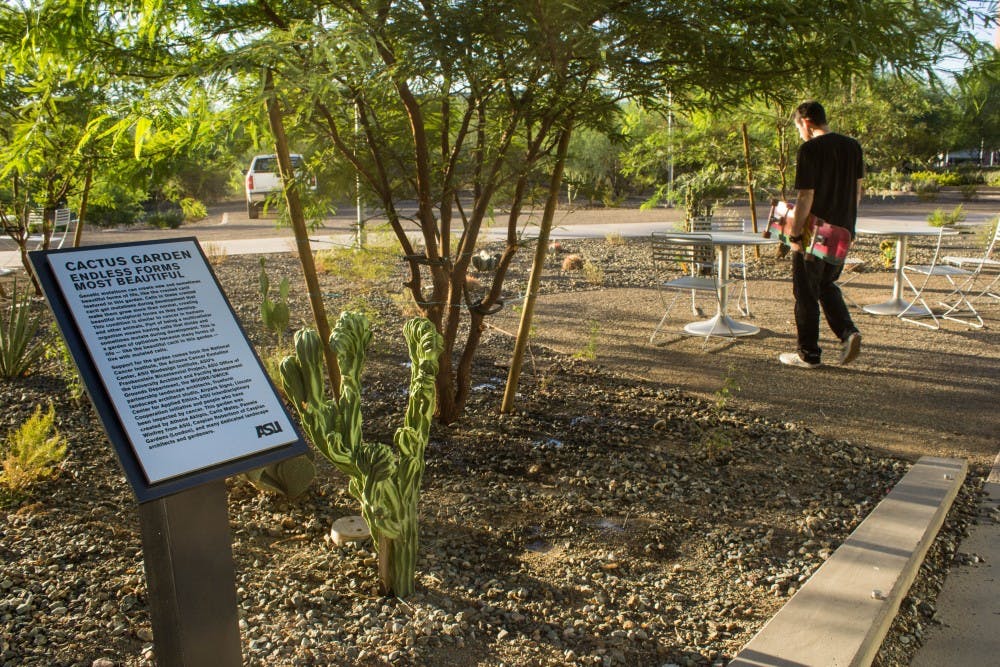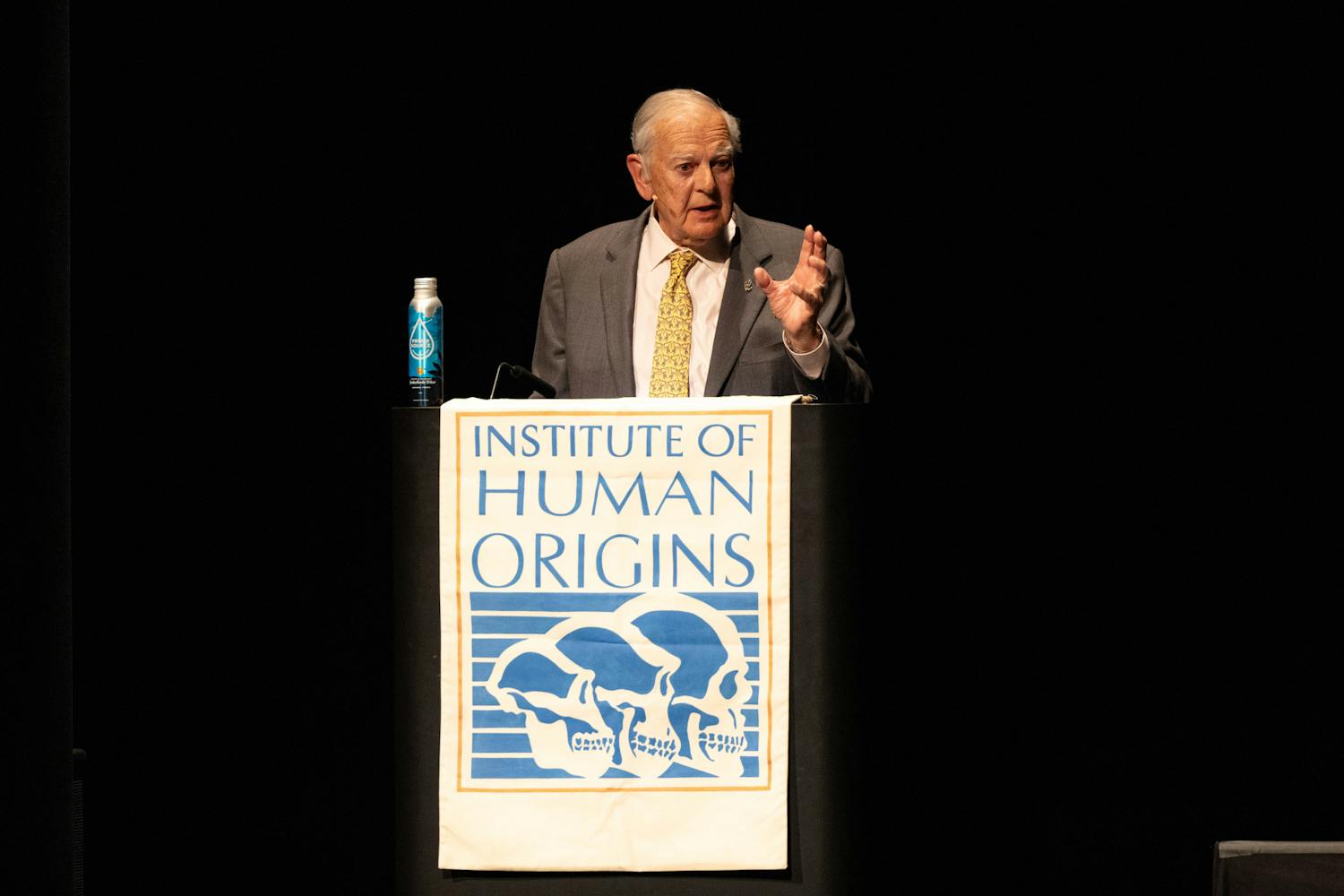The Endless Forms Most Beautiful cactus garden is located outside the new ASU's Biodesign C building. The garden is filled with genetically mutated cacti, which causes their cells to grow in abnormal ways.
The crested cacti is special – there's no uniformity to it whatsoever. Some look like coral one would find in the ocean, while others are twisted into fan-like shapes. The crested cacti are a bizarre symbol of how cell proliferation can affect a non-human organism.
Valerie Harris, a graduate student in the Biocomputing, Security and Society Research Center at the Biodesign Institute, said that people do not generally associate tumors with beauty, which makes the mutated crested cacti so interesting.
She said the mutations that the cacti developed are similar to what humans affected by cancer get, but the disease does not kill the cactus.
"It causes the cacti to grow in a really kind of beautiful crested way," Harris said. "They're actually prized garden specimens that we have."
Athena Aktipis, an assistant professor in the ASU Department of Psychology, is the lab director and principal investigator of the Cooperation and Conflict Lab, whose mission, according to the lab website, is to "explore how cooperation and conflict shape life, from human societies to cellular interactions."
“Gardens are often a place of healing, and we really liked the idea of having this garden where people can come and see these mutated cacti,” Aktipis said.
Aktipis said that this was a very different way of visualizing cancer.
“It’s hard to visually engage with what cancer is,” Aktipis said. “The crested cacti can really show what it looks like to have a mutation that leads to too much cell proliferation.”
Harris works with the ASU Arizona Cancer Evolution Center and said the center's goal is to eradicate the assumption that in order to combat cancer doctors need to get rid of all the cancer cells because from an evolutionary perspective, that doesn’t really work.
Harris said this is similar to how when someone takes high-dose antibiotics they can develop a resistance to the drug, where cancer can develop a resistance to chemotherapy.
“We’re able to control the cancer rather than eliminate it," Harris said. "Our goal as a center is to treat cancer more like a chronic disease, where you just kind of live with cancer rather than dying from it.”
Pamela Winfrey, a scientific research curator at Biodesign, said that many people who worked on the project have had experiences with cancer and that it was very powerful to work on a project like this.
“It was like becoming a part of a community," Winfrey said. "We were able to take little plant ID cards and attribute them to people they had known that had been impacted by cancer. That was also a really nice emotional connection.”
Harris said they wanted to collect these cacti and exhibit them as independent art rather than some kind of beautiful aspect of genetic mutation.
"That's why our cactus garden is actually called the Endless Forms Most Beautiful, because these mutations that have created things that, if they happen in humans, it would be pretty bad but in plants, we actually find it really beautiful," Harris said.
Reach the reporters at nesherwo@asu.edu and jlmyer10@asu.edu or follow @thecolesherwood and @jessiemy94 on Twitter.
Like The State Press on Facebook and follow @statepress on Twitter.




